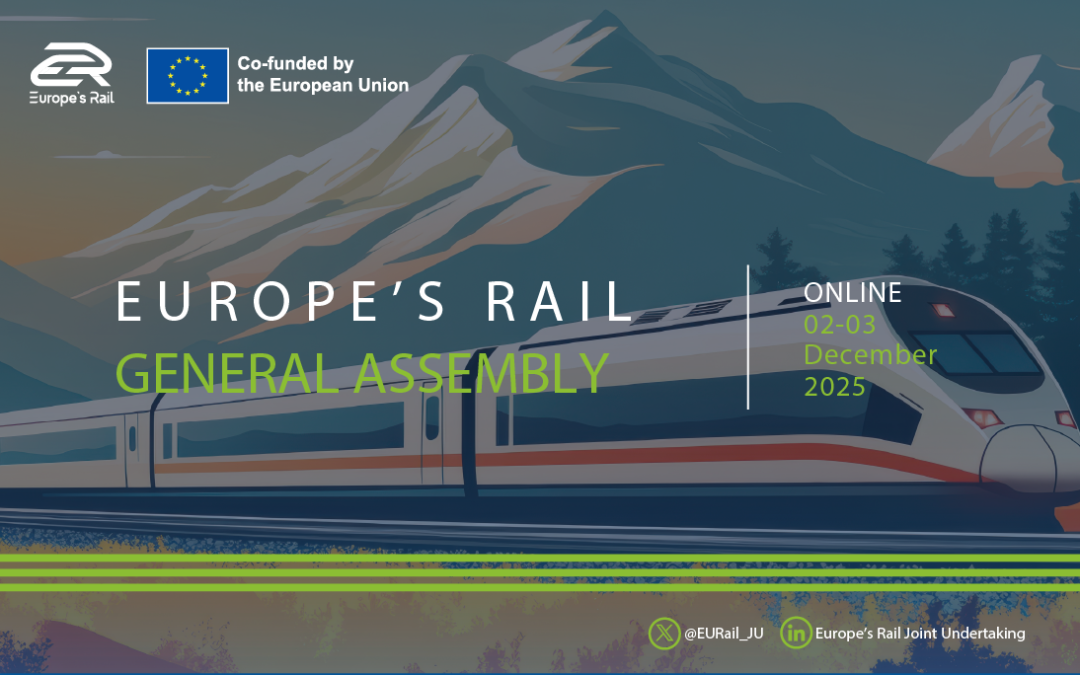On 2–3 December, the Europe's Rail General Assembly 2025 took place, providing a valuable occasion to look back at the...

Rail freight transport faces significant challenges like asset utilization, poor data quality or complex processes. To cope with these challenges, changes are required. Automatization and digitalization play a crucial role in enhancing the competitiveness of rail freight. The vision of future freight transport involves an intelligent system that interconnects various stakeholders, processes, and technologies. However, due to the close interdependence in European rail freight transport and since the full digital freight train (FDFT) and its ecosystem is not compatible with today’s systems, only a harmonized approach on European level will be successful.
To tackle these challenges, the project Flagship Project FP5 – TRANS4M-R was initiated. TRANS4M-R is a consortium project that is part of Europe’s Rail Joint Undertaking (ERJU) and is funded within Flagship Area 5 with a duration from 2022 to 2026. The project aims to boost innovation for the European rail freight sector, concretely by developing, validating, and demonstrating TRANS4M-R technical enablers.
This document constitutes Deliverable 2.3 Reference Freight System Architecture of ERJU Flagship Area 5 project FP5 TRANS4M-R and is aimed at providing an overall functional reference freight system architecture by combining different subsystems into one. For FP5 – TRANS4M-R, these subsystems comprise the FDFT, yard automation systems, innovative freight assets as well as seamless operation. The developed architecture describes the target of full automation of the freight sector, as well as a subset based on the agreed technical enablers in TRANS4M-R.
The reference freight system architecture is compiled by the different partners of this task 2.3. Complementary to the work packages involved, this work focuses on the interfaces of the different subsystems, their interaction, and the resulting impacts on the overall systems. Accordingly, the level of detail presented within this document is on an aggregated level. For details on the subsystem architectures please refer to the deliverables of the respective work packages (WP3, WP4, WP5, WP6-WP12, WP25, WP26-WP31). The alignment process of WP2 on the reference freight system architecture is described in the methodology section of this document.
According to its delivery date early in the project, the aim of this report is to describe and define an overall architecture that is highly modular to leave enough space for future developments within the course of TRANS4M-R. The interfaces between the different subsystems are defined accordingly and the overall architecture is described at a high level. The architecture needs to be detailed out in upcoming deliverables of the different subsystems. This report therefore does not describe a fully detailed overall architecture.
The developed architecture provides an important basis for further collaboration on the development of an automatized and digitalized freight rail operation, especially within FP5-TRANS4M-R. In the further course of FP5-TRANS4M-R, the reference architecture will be applied enabling its further refinement in FP5 TRANS4M-R. Lead by the interoperability and modularity principles, further adjustments, and enhancements at later stages of the migration, i.e., roll-out scenarios, will be possible. The functional reference freight system architectures will serve as foundation for authorisation of FDFTO, Seamless Freight vision and yard automation technologies and procedures. In addition to this deliverable, the architecture will be provided as a separate model for better usability.